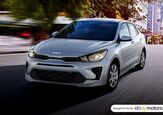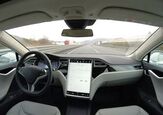#2015Sales
There Just Might Be a Kona Under the Tree This Christmas
Desperate eager to fill holes in its product lineup and put some bounce in its sales step, Hyundai unveiled the subcompact Kona crossover earlier this year, with the model arriving on North American shores in the first quarter of 2018. The Kona is just one part of Hyundai’s revamp of its crossover lineup — and its culture.
More crossovers, bigger and smaller crossovers, EV crossovers, and faster crossovers make up Hyundai’s short-term goals. By “faster,” we’re referring to the development cycle, unless the brand has some hot “N” action waiting for one of its cargo-friendly models. Caught off guard by the utility vehicle craze, Hyundai wants to pare its product planning window down from three years to a year-and-a-half, allowing a quicker response to new market trends.
But the first step towards a more agile Hyundai Motor Company is the Kona. Small, cladded, and efficient, the 2018 Kona might arrive sooner than planned.
Minivan Sales Down By Half Over Last Decade, But All Is Well?
Minivan sales in America fell 8 percent to only 513,000 units in 2015, less than half the number of MPVs sold in the United States a decade ago. Yet the number of sales produced by the three biggest players, across four nameplates, are more than healthy enough to suggest Fiat Chrysler Automobiles is wise to reinvest in their Windsor, Ontario, plant and the all-new Pacifica van.
Of course, the degree of wisdom employed by FCA as the automaker goes about reinventing its van is up for debate. Switching from Town & Country to Pacifica? Leaving the Dodge Grand Caravan to lumber along in previous-gen form? Neglecting all-wheel-drive in a gaga-for-SUVs market? There are upsides and downsides to each of these decisions.
But FCA’s decision to stick with a segment from which Ford, General Motors, Hyundai and Mazda fled is a wise one. The minivan market is much, much smaller than it was a decade ago. But if half a million people in America want to buy a minivan every year, the automakers which historically controlled the sector will want to own as large a chunk of that market as possible.
2015's Most Popular Vehicles in America - Segment by Segment by Segment
American consumers, businesses, and government agencies registered a record-setting 17.5 million new vehicles in 2015. That takes into account more than 2.5 million pickup trucks, half a million minivans, more than 420,000 commercial vans, more than 420,000 subcompact crossovers, and nearly 2.4 million midsize cars.
But as SUV/CUV sales increased rapidly, pickup trucks strengthen, and car sales decline, which vehicles dominated their respective categories?
Envelope, please.


















Recent Comments